The Article
THE WAND 14-4: ASYMMETRIC & PROUD
12th August 2022
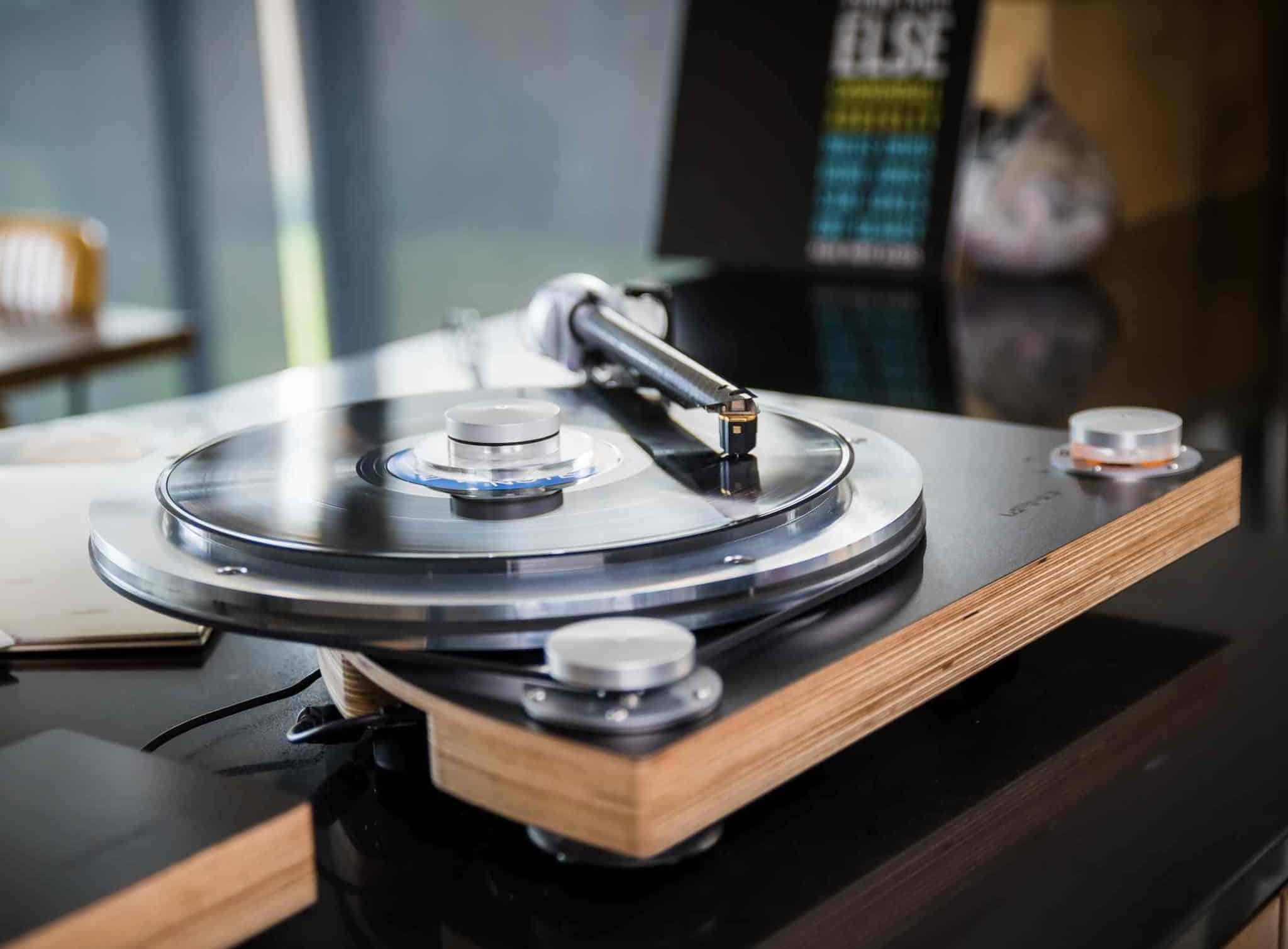
Offering a unique design with an asymmetric plinth and forehead smacking centre of gravity, Paul Rigby checks out this rather compelling belt-drive turntable
I don’t know, maybe folks in New Zealand have too much time on their hands. Maybe it’s that impressive scenery that inspires them. Maybe they’re so busy being stuck in the corner of the world, as they are, they avoid being swamped with competing influences and so have more freedom for original thought.
I’ve no idea.
What I do know is this. Design Build Listen Ltd’s The Wand turntable is completely fascinating. Let me tell you all about it.
Firstly though, just why am I telling you all about it? It’s not exactly new is it?
No. No it isn’t. And yet its new all over again to the UK and that makes a difference because The Wand desperately needs a guiding hand in order to fulfil its promise as a successful commercial venture.
INSTALLATION
Before we get to the hardware, I need to talk a little about the installation. It’s a critical part of the buying experience and can make or break a product right there and then, even before it’s switched on. Let me remind you, this is not an Audio-Technica machine. It’s not a Pro-Ject. It’s not a Rega. It’s not a plug and play. This is not a two minute install product.
When you buy The Wand, you’re buying a bespoke, hand built, piece of engineering that needs careful assembly. You don’t throw this turntable together and hope for the best.
Like many high-end pieces of HiFi that emanate from the fevered brain of one individual, in this case that of Mr Simon Brown, there is often a gap between that person’s technological insight and the final customer experience. That’s no fault of Brown, I hasten to add. When you’re bringing a product to market, though, you need specialists around you to help add polish and The Wand needs a bit of polish in terms of the customer experience.
Before I listened to the turntable, I checked out the installation manual and I looked at the website and then I perused the support videos on YouTube.
The intention to offer guidance to the user, to allow them to get The Wand turntable up and running with little or no effort is plainly there. Trouble is, the implementation is flawed. It’s ok but it’s still flawed.
In short, the manual is adequate at best while the support videos are chock full of missing information.
If ever there was a reason why quality distributors are needed in the HiFi industry, that reason is The Wand.
Talking to the UK distributor (www.wholenotedistribution.co.uk) about The Wand, he knows he has an exciting product on this hands. But he also knows that there’s work to be done in terms of making the installation experience a breeze.
The turntable I received for review was received before that work had got underway. So The Wand I received had not yet received the benefit of the distributors experience and expertise. The Wand I looked at was reduced to so many parts, it was a trial to install. Probably more so than would normally be the case and, if you’re already a Wand turntable owner, possibly more so than you experienced.
My Wand turntable took a long time to complete and the inadequate information I had to hand unnecessarily extended the install procedure because, at times, I had to resort to guesswork and/or trial and error.
The fact that the support video showed a turntable that appeared to be in a much more advanced state of completion out of the box than my own made me wonder about a lack of consistency in installation terms and where the installation base line was for the customer.
However.
None of that should concern you. Apparently, before The Wand goes on sale in the UK, that will all change. Hopefully, these changes can (should) be reflected in other territories later on.
This turntable will hopefully receive a brand new manual, new support videos and specific instructions that the donkey work of installing this turntable will lie at the feet of none other than your favourite dealer. That is, by the time you buy this turntable, the actual installation task should be pretty minimal. The dealer will be the guy who will do the heavy lifting in installation terms.
I hope that will be the case and knowing the distributor as I do, I believe it will be the case.
Now if you already own a Wand turntable and your installation experience was easy peasy then congratulations and I’m happy you were able to get underway quickly. I can only report on my experience and the how the design appears to sit here, in the UK.
So, assuming that potential issue has already been fixed, what of the basic design of the 14-4 turntable itself?
THE DESIGN
The reason this turntable is called the 14-4 is because the platter is 14 inches in diameter and the platter itself comprises four layers of alternating aluminium and acrylic. The layering is there partly to damp but also to drain noise from the record and down through the platter. On top of that is a doughnut shaped piece of acrylic that serves as a platter mat.
The diameter is such to increase the inertia of the plinth which helps maintain a steady speed with less strain. The larger yet slimmer platter is actually a more efficient way of producing extra inertia than the normal solution of offering a smaller yet thicker platter. According to Simon Brown, it’s actually twice as efficient.
On the bottom left is a large, bespoke pulley – an unusual place to have a pulley. That connects to the platter with a Swiss-made belt. That is run by a DC motor and an isolated servo to maintain speed.
Before you add the platter, if you just look at the plinth on its own, that plinth looks like a quarter of a squashed circle. And one full of holes to boot.
The holes are there almost as fire breaks. Well, vibration and noise breaks. They stop motor vibration and noise moving across the plinth and up the tonearm and through the bearing. The plinth sits on three suspended feet using solid silicon O-rings as the suspension system. This means that the suspension doesn’t wander over time. Some turntables need to recalibrated after a period, not The Wand.
The spindle, you’ll notice, appears to be placed off to the side as an after thought.
The reason for this is that the centre of gravity has been shifted on the 14-4. Instead of the centre of gravity lying underneath a centrally mounted spindle – as it is in most turntables currently on the market – the centre of gravity for the 14-4 is place on the arc of play. That is, the arc the stylus traces across a vinyl record. Right there. The holes in the plinth pull double duty in this regard because they help to push the centre of gravity to that arc position.
What that means is that the play arc is a centre of isolation. It is, in fact, the stillest point of the entire turntable.
The turntable can hold a 9.5”, 10.3” an 12” arm. I grabbed the 10.3” for review. Oh and you’ll find a lid in the box too. I didn’t have a copy for review, however.
The arm itself is a one-piece with a carbon fibre tube mounted to a large, non-movable counterweight block on the rear. To adjust tracking force, there are a number of plates affixed to the rear that can be added or removed via a screw-threaded bolt. You also get a larger screw-threaded bolt on the rear that acts as a fine-tuner to change tracking by fractions of a gram.
These plates also include a cut out that allows you to swing the plates laterally to affect the azimuth of the arm and thus your cartridge if required.
In front of the block is the anti-skate and arm lift and ahead of that is a piece of metal that pivots to lock the tonearm into place. To further minimise vibration, I chose to remove the arm lift pad on my sample. I move my tonearm manually, by hand and have no use for arm lifts. Removing this pad is simply done by unscrewing a single, tiny screw. I know that most people will retain this feature but the option to remove it is there if you wish.
Incidentally, the manual arm lift on The Wand is the overhanging bit on the very end tip of the arm itself.
And another thing I have to mention about The Wand is the almost complete absence of a recognisable headshell. The last time I saw this sort of anti-headshell thinking was when I last reviewed a turntable from The Funk Firm. Here, The Wand’s tonearm employs a thin piece of metal to connect the cartridge to the arm. The idea being that the headshell mass is reduced to reduce resonance. After all, why do you want a resonance circulating around a whopping headshell for? The Wand is designed to remove that potential issue.
It’s at this point that I want to talk about the included jig. One of the most useful tools I’ve ever used on a turntable and only matched by examples I’ve seen bundled with VPI turntables.
This convolutedly-shaped piece of metal is used to set the overhang of the tonearm, the arm height, the azimuth and the cartridge itself. It’s very easy to use, highly recommended and I wish more turntable manufacturers had them bundled in their turntable as part of a default install routine.
Running at three speeds (78rpm is included as standard) via a nicely chunky speed control positioned on the bottom right of the plinth, the plinth itself is made from a German-sourced plywood of around 25 layers (I think. You’re eyes tend to go funny when you count layers of plywood). An earth wire runs from the plinth and also the tonearm while a thin cable runs from the tonearm holding a pair of phono plugs.
The mains cable is attached to a switch-mode type power supply that plugs in via a hidden socket, angled around the bottom left area of the plinth. An older style power supply utilised two plugs, an upgraded, small power supply now uses just one plug and you can choose which socket you want to plug into here. Apparently, it makes no difference.
SOUND QUALITY
To start the tests, I ran with a copy of Rick Wakeman’s Six Wives of Henry VIII (A&M), mainly because of the wide-ranging and varied instruments that are spread across the soundstage including analogue synths and varied organic instruments plus a female backing chorus for good measure.
As for the cartridge? I began with moving magnet and the Goldring 1042, which is one of the best MM designs out there.
Your first question might be something like this, “Why?”
The 1042 might be a quality moving magnet design but it remains moving magnet and it costs a mere £324 which, when you look at the price tag of The Wand turntable and tonearm, really is ‘mere’.
To explain then. This turntable is a high-end design. It costs a pretty penny. Unless you are high-income earner, you are going to have to save and scrimp and do without until you hit the magic point when the ‘Buy’ sign lights up in neon, flashes in neon and declares that yes, you now have permission to play that rare Argentinian promo pressing of The Birdie Song. The one with the picture cover and the ‘tweet to the beat’ message on the run off.
After that brief dizzy spell dissipates, at that point, you may very well come to realise that you have next to no cash to actually run The Wand with a cartridge of equal quality. Something in the region of £2k and upwards. All of your hard earned may have been invested in the direction of the turntable and tonearm. What to do?
What to do? You make do.
You get yourself a decent cartridge, just to get you going. Just so you can actually play vinyl. Just to prevent The Wand becoming a static ornament and a talking point at parties.
You can go one of three ways. Either get a high-end moving magnet which is my choice here, grab a high-output moving coil like a Hana EH (£409) which uses the same moving magnet setting. Finally, if your phono amplifier is good enough to handle moving coils and won’t become a bottle neck, then a low-cost moving moving coil like a Benz Micro Gold (£350 approx.) is an option.
I wanted to see how The Wand handled the moving magnet technology so I rested upon the 1042.
So how does The Wand sound with a 1042?
Wow!
That’s it! That’s the review. I’ll be back next week so, for now, it’s thank you and goodnight.
No, really. Even with a ‘mere’ moving magnet (or MMM, as I like to call them) The Wand was impressive. Strike that, seriously impressive.
Two things grabbed me right from the off. The timing. My goodness, the timing.
How to convey what I mean. OK, for those of a certain age or younger, nostalgia TV fans in general, back in the late 60s or 70s, let’s say you’re watching The Avengers or something verging on the psychedelic at the best of times and the protagonist, guy on the screen has been drugged. The camera gives you a character’s-eye view. You see what he’s seeing. The character is shown seeing double or triple or more. He looks at a chair say and everything’s out of phase. That’s what you get from a lot of turntables. A lack of focus. But it’s more than that. Often the problem with turntables is like that but the effect is subtle. That out of phase thing is often not particularly obvious. Not as obvious or as extreme as our Avengers episode. Even so, the brain struggles a bit because it knows there’s an issue – your brain is a pretty sensitive measuring device you know – but tries to cope.
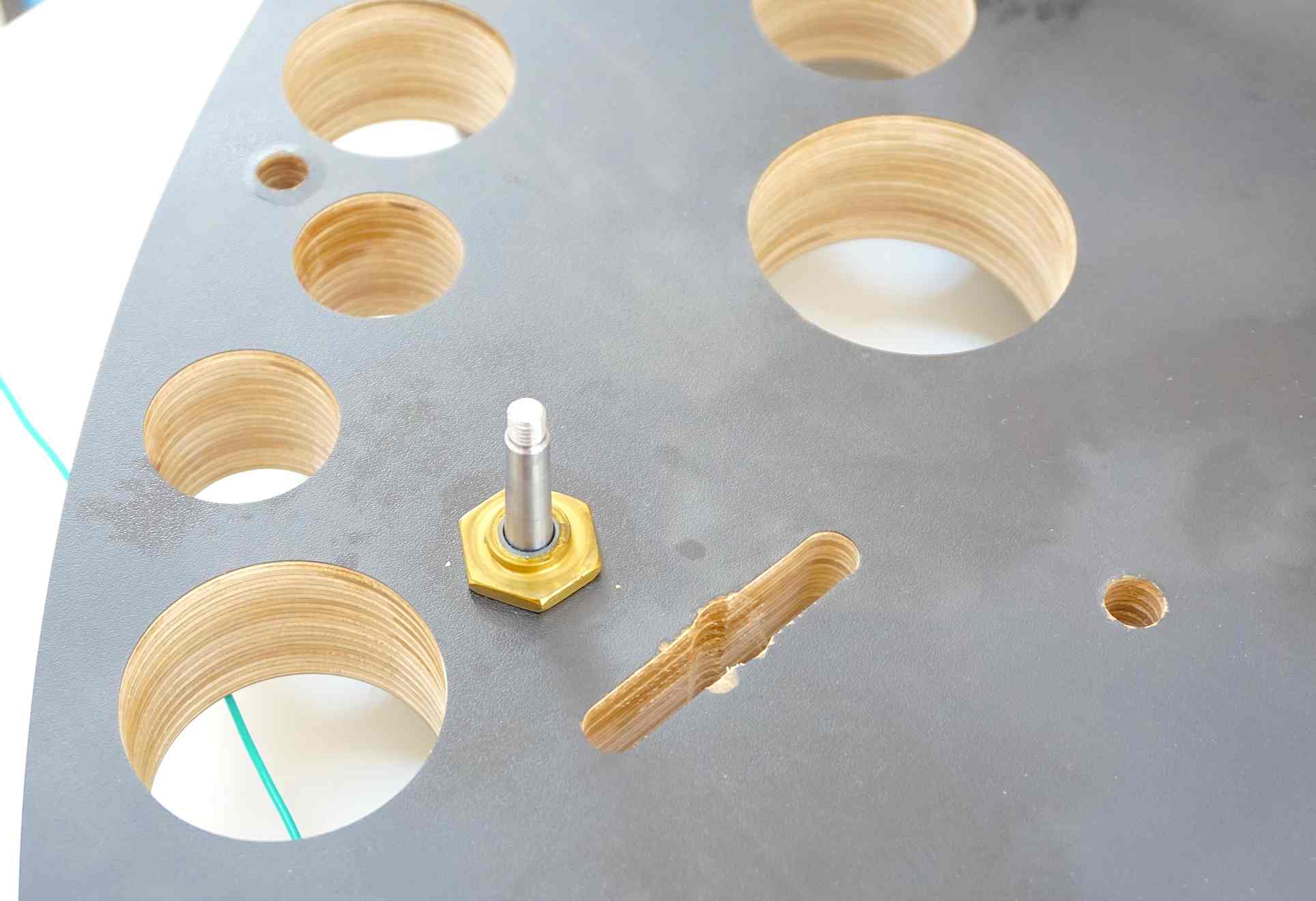
So when everything is truly in phase. When that focus is pin sharp. When, in fact, the timing is spot on, the brain – maybe for the first time – relaxes. Truly relaxes. Music is focused yes but it’s also accurate now. Notes start at the micro-second they’re supposed to start and end, again, on the nail. Your brain stops trying to fix things and you start truly enjoying your music.
That, my friends is The Wand in a (rather large) nutshell.
And the second thing? Because of that focus and accuracy, the definition of the detail was outstanding. Previously shy and reserved guitars offered a lot more information now, the precision around the midrange was stunning. For treble? Cymbal splashes seemed to reach further and offer a longer and richer reverb or echo effect.
Bass? No different. There was an impressive precision here, a snap that offered both impact but also character. There was nothing plastic or unnatural here.
Frankly, I could easily live with The Wand and the Goldring 1042.
But we don’t want to settle for that do we? Let’s move up the scale and let’s go moving coil. I attached an Ortofon Cadenza Bronze (£1,800) to see how that affected the sound.
One thing, when installing cartridges that feature cartridge bodies with a built-in screw thread. The Wand doesn’t help because the headshell is very thin indeed. So you have your cartridge, a thin metal plate then your screw head. Most cartridge screws are supplied with the assumption that your headshell will have an appreciable thickness. The length of the default screw tends to take that into consideration. Not here.
Hence, when I screwed the Bronze cartridge to the tonearm, the screws were inserted as far as they would go but the cartridge wasn’t fixed to the headshell. The Bronze still wobbled about a bit.
So, in this case, I had to place two metal washers on each screw to compensate for the thin nature of The Wand headshell. That worked fine but I thought I’d warn you.
In sounds terms, what did this moving coil give to the sound, if anything? It brought lots of extra space in and around the soundstage so instruments had a real, newly-minted freshness about them. The soundstage as a whole sounded scrubbed and clean. There was a real ‘this is a new day’ feel, a ‘this is the band playing after a good breakfast’ sound. These are fully rested players and they know what they’re doing. There was a real sense of confidence from the Bronze.
For the treble, cymbal taps had a real delicacy but a distinctly metal ‘ting’ too. A rich and expansive metallic sound that was both fragile but also rich in terms of that reverb comeback, after the hit.
Percussion sounded nimble, almost athletic. The accuracy I mentioned earlier added a real pizazz to the percussion. A sense that here was professional going out his business. This was a guy on top of his game.
The further drop in terms of the noise floor added more detail while separating each instrument meaning that sounds were better isolated. You could hear were they started and stopped. This added to the overall complexity of the sound. That richness again.
To this point, I had been testing The Wand without the supplied clamp in place. To repeat, thus far, the clamp had had no part in these sonic tests. It was time to bring it into the action.
In place? It sounded very nice indeed. But it’s not for me. Some people will love it and I can understand why and you need to check it out yourself and make a decision but I preferred to leave the clamp off The Wand. Why?
The clamp gives you an extra sense of control across all frequencies. There’s more focus, more precision and a strengthening of the bass. What I mean by that is the bass offered more mass, more structure. Some will also see the addition of the clamp as an associated increase in balance.
I personally think it goes too far and removes some of the magic. Without the clamp, I am there. I’m in the music. I’m having as much fun as the band. With the clamp in place? It’s a bit like looking at a masterpiece. There’s a separation. There’s me, then a gap and then the music. The music lacks a bit of life and excitement and unpredictability. The latter is required because it’s being produced by an unpredictable species. The fault-ridden humans. That’s what makes The Wand great.
The clamp over controls. It add boundaries. It says to the music, “You will not pass this point.”
Me? I love not knowing what will happen next. There’s a real sense of freedom without the clamp. A rush of excitement. The clamp dulls music. Thus, it took no further part in this review.
Time to push limits, I think. Along with a move to the Tony Bennett album, Something (CBS), I installed the van den Hul Crimson XGW Stradivarius which, the last time I looked, retailed at around £4,000 but is probably more now. In fact, has it been deleted now? Not sure.
Why did I reach for such an expensive cartridge?
I have a ‘rule of thirds’ target for turntables to enable a turntable to reach its full capacity. In broad terms, this means having a turntable where the plinth/platter, the tonearm and the cartridge all retail for around the same value. Doesn’t have to be exact but it does have to be there or thereabouts.
The basis of the idea is to remove performance pressure from the plinth/platter (and I think there’s too much stress laid upon this area of any turntable), to pay full respect to the tonearm (and there is too little respect given to this component) and then to trust the cartridge to be able to give more performance without the owner bottling out and making do with a much cheaper model.
With the Crimson Strad, I was matching the price of the plinth/platter (give or take) but The Wand tonearm was the minor figure in price terms. Nevertheless, I wanted to see how far I could push the tonearm. I wanted to see if the tonearm became a bottleneck if pushed in sonic terms. So this cartridge test was actually more about testing the tonearm than the cartridge itself.
So how did this combo sound? It was a Curate’s Egg. Good in parts. Highlights were an improved, overall mature sound that gave an indication just where The Wand turntable as a whole could go if really pushed and pushed hard. There’s capacity here and further heights to scale but there were certain areas of the midrange that strained and ran out of puff. You could hear the cartridge and the rest of the turntable wanting to soar but hitting a ceiling imposed upon it by the tonearm. Which is not the fault of the tonearm because this is a £1,699 device. What it does show me though is that an upgrade to something more comparable to the price of the rest of the turntable would lift the Wand plinth to superstar status. What you’d end up with would be a turntable rated around £12,000 in total and that turntable would be special indeed.
So even if you buy The Wand in the configuration I have here and the price it demands here, that upgrade option is there if you want it and, importantly, can afford it. And if you do go for it then the upgrade will be worth it.
That the Wand can even consider reaching such sonic heights is truly exciting. I didn’t test such a concept because that would turn this review into an upgrade feature. We’re hear to review the plinth/tonearm package here.
CONCLUSION
Full of unique and interesting design choices, The Wand is the result of independent research. This is not a ‘me too’ turntable. This deck is not a crowd follower. It’s not a profit chaser. It’s a pioneer. It breaks new ground. The Wand is obviously a work of love that’s chasing a musical passion. It’s the result of a singular vision.
In short? The Wand is work of art. If you can afford The Wand, get it. Simple as that. It’s a brilliant turntable.
More than that, there’s enough innovation here to warrant my ultimate accolade. Which is why I’m going to give this turntable a very rare Golden Groovy award. Congratulations to the designer, Simon Brown.
THE WAND TURNTABLE
Website: www.wholenotedistribution.co.uk (UK) or designbuildlisten.com
Price: The Wand Turntable – £3,499, The Wand tonearm (10”) – £1,699. Combo package price – £4,699. Other tonearms and package prices are available.
GOOD: innovative and unique design, aesthetics, midrange timing, overall definition, rich treble, characterful bass, overall accuracy
BAD: clamp

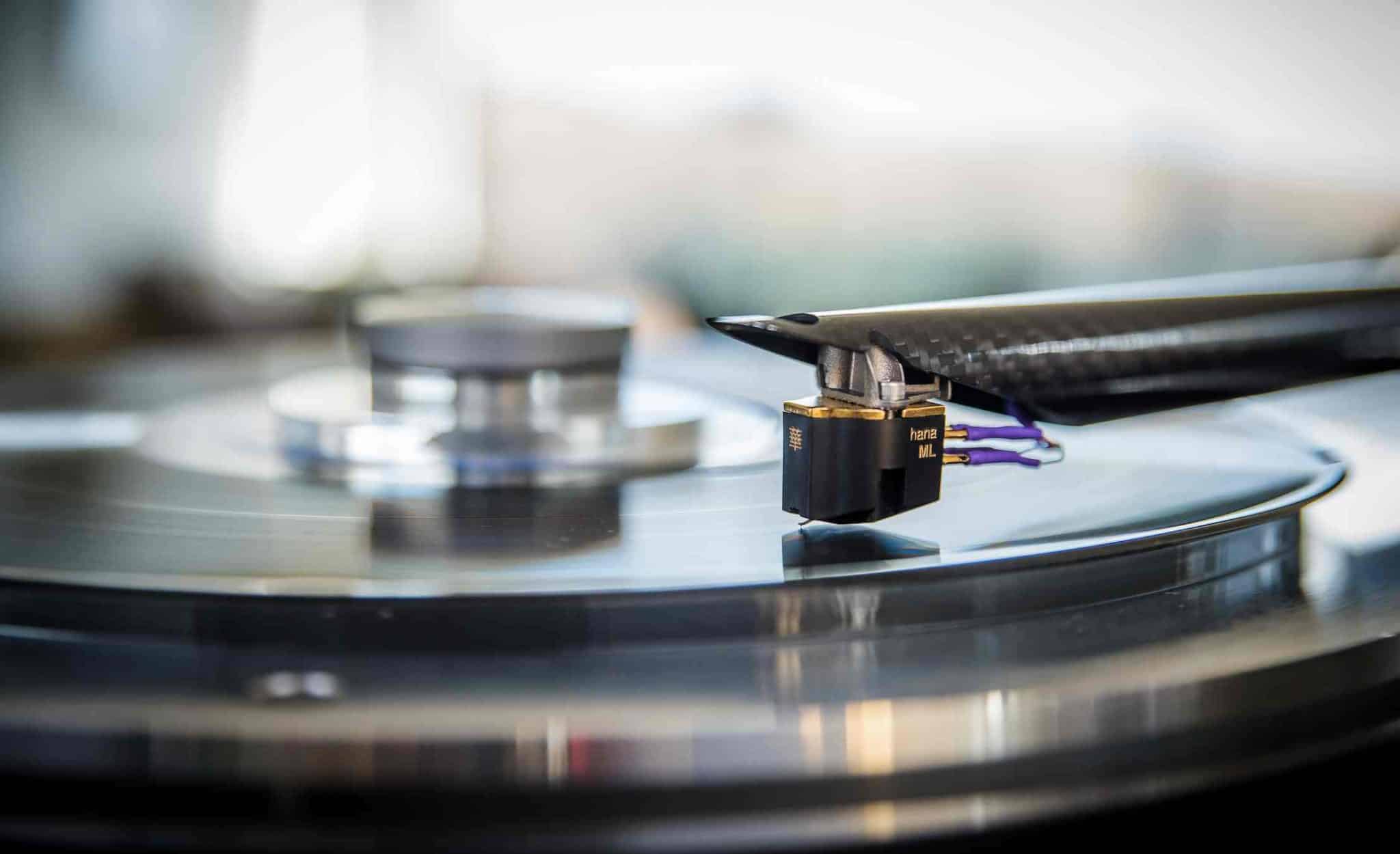
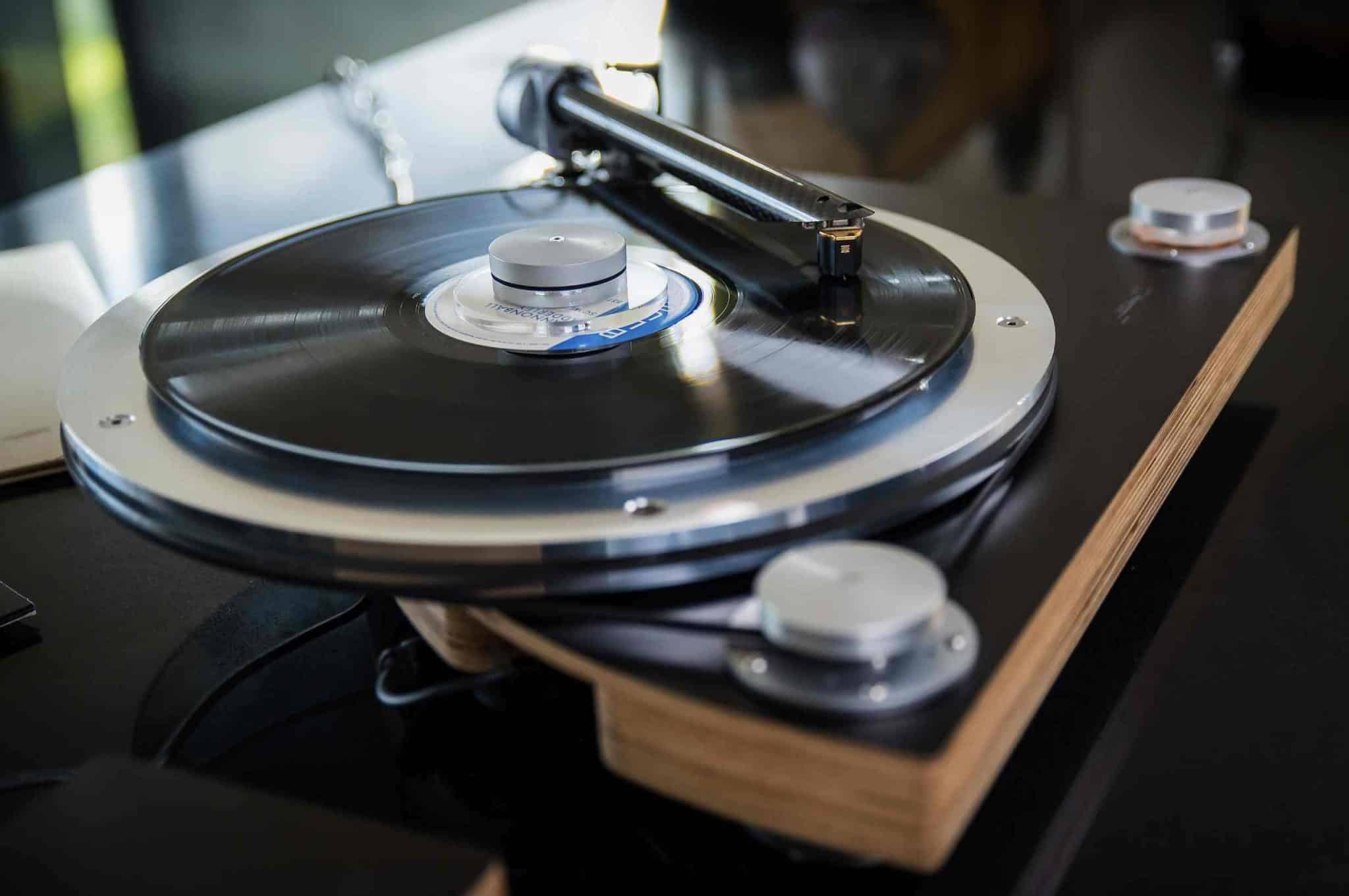
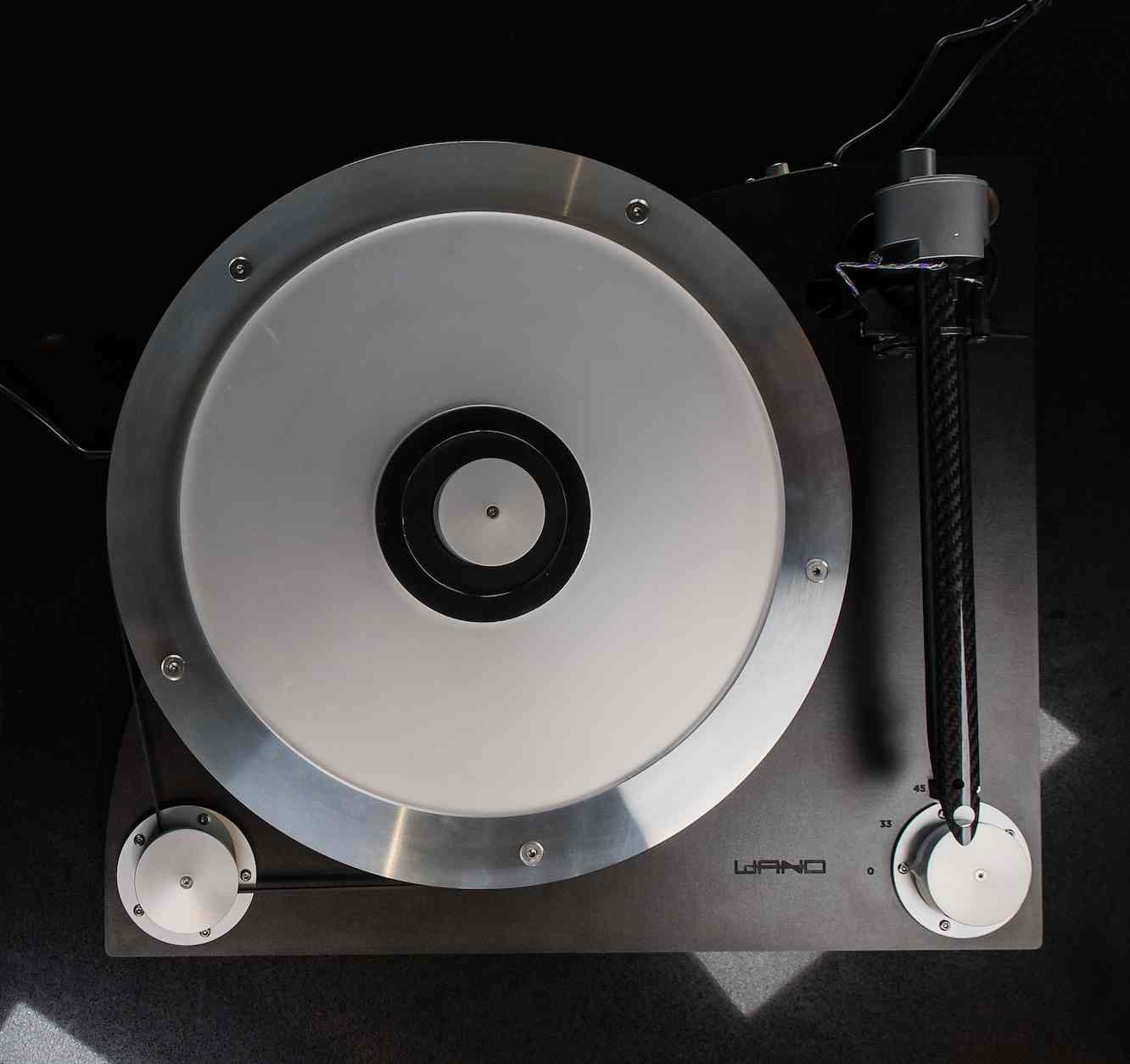
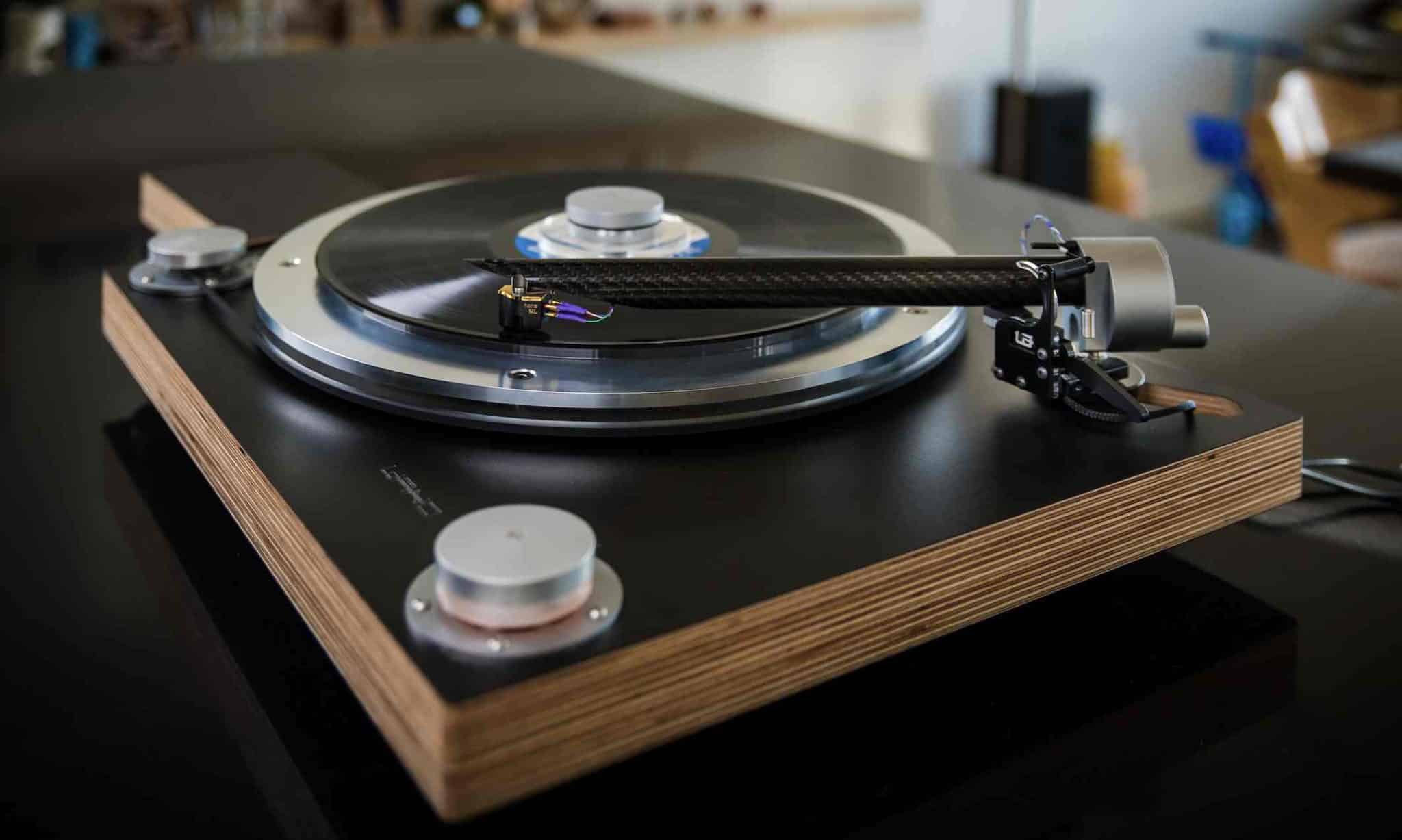
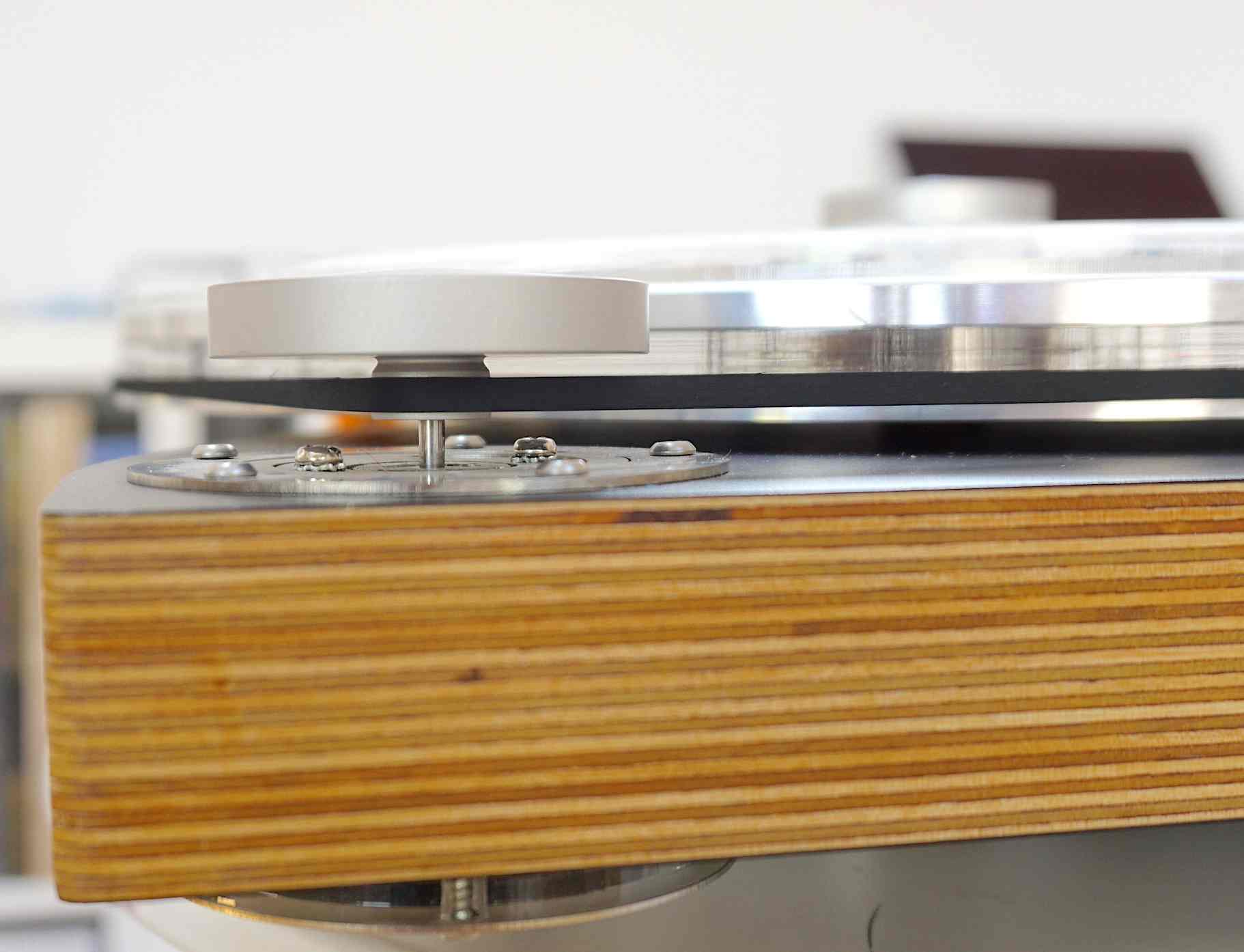
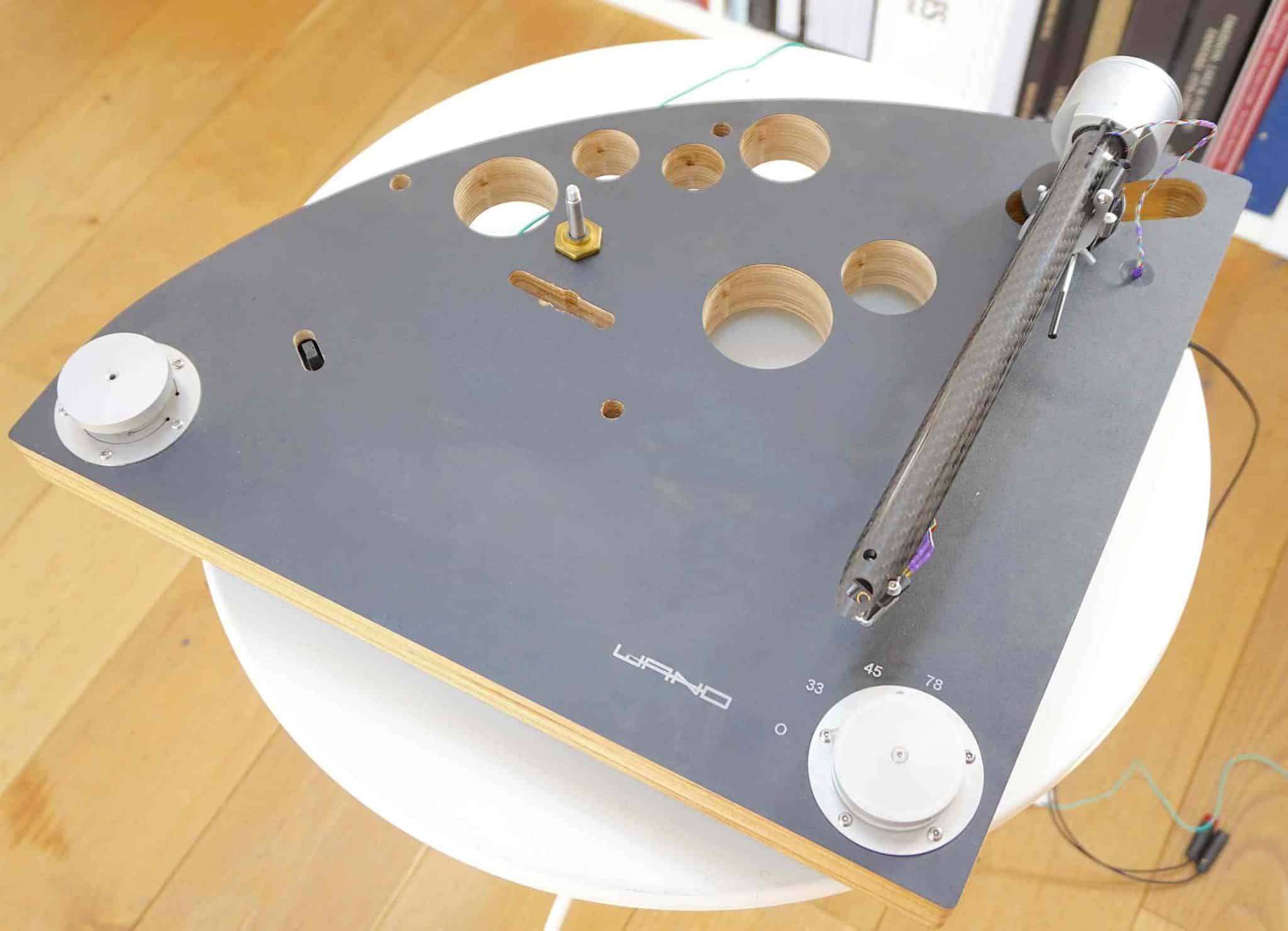
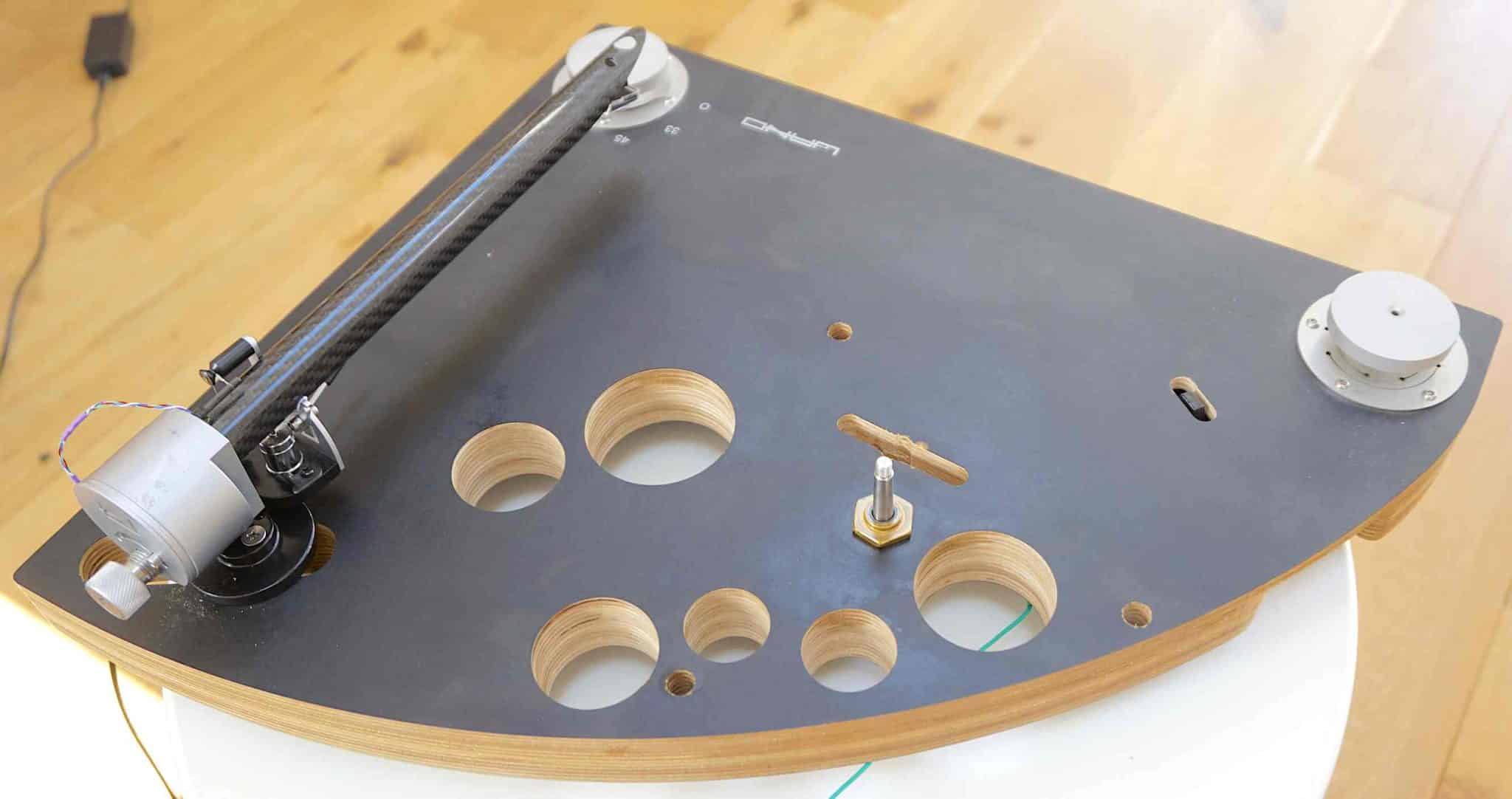
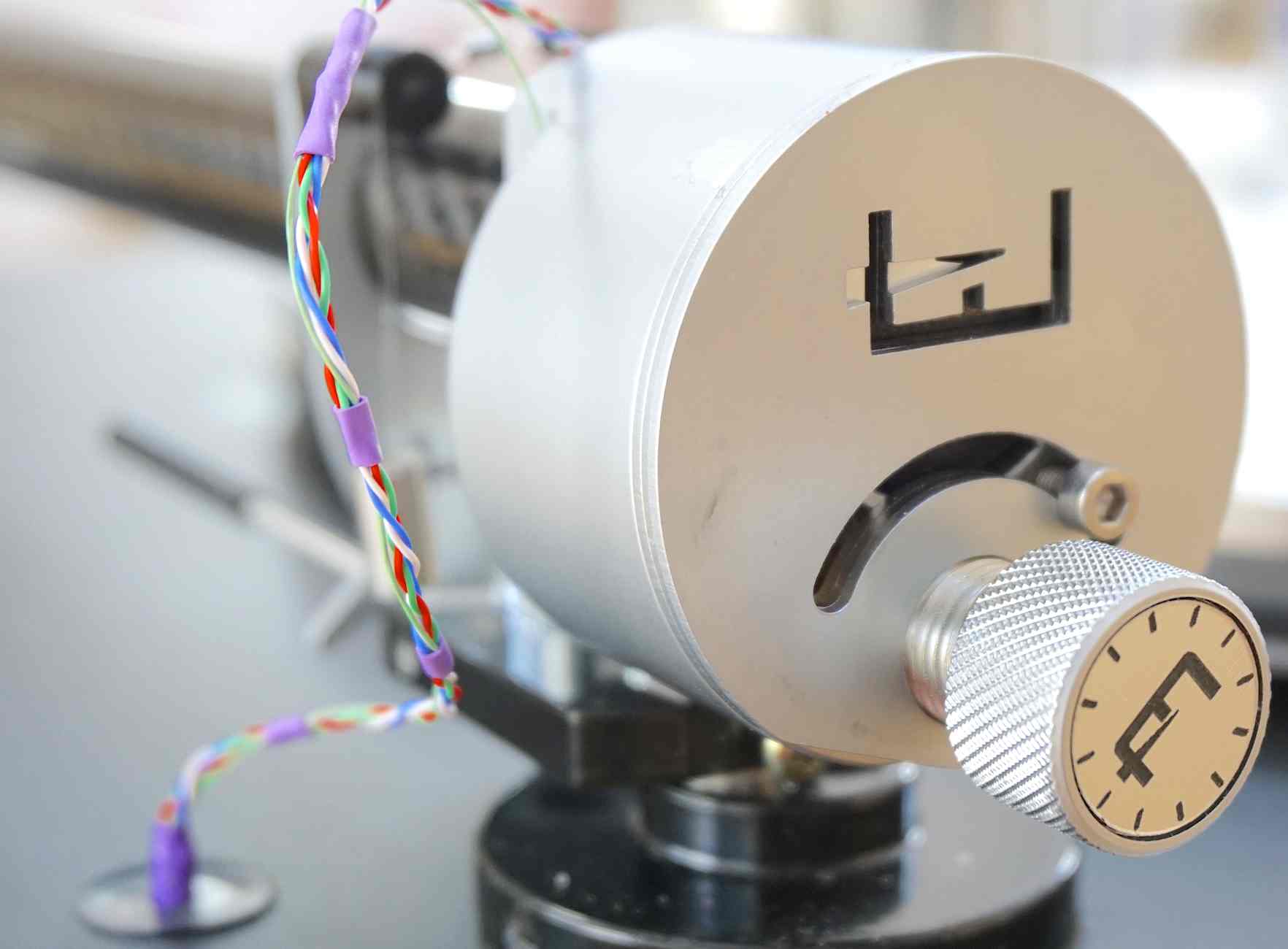
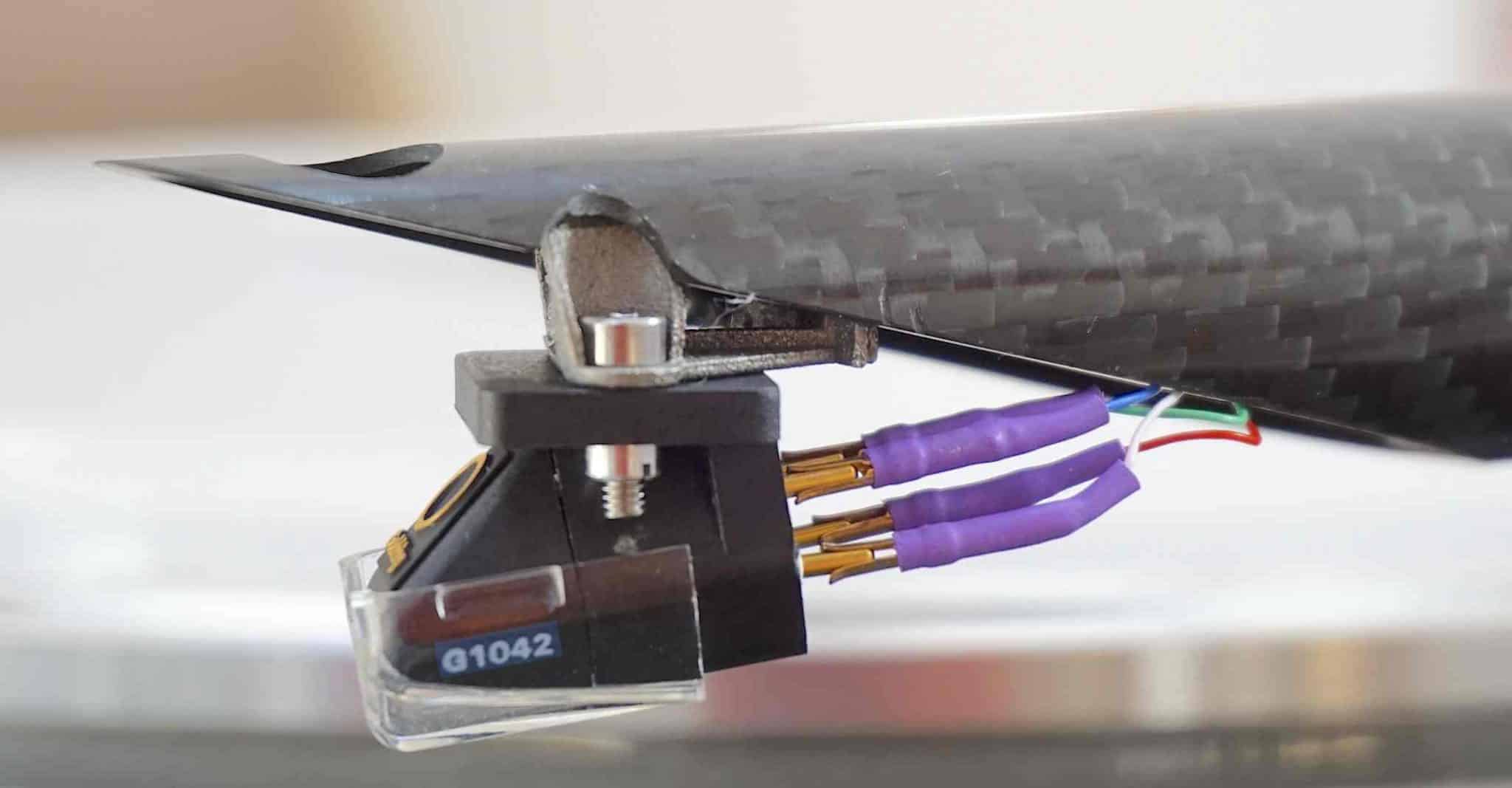
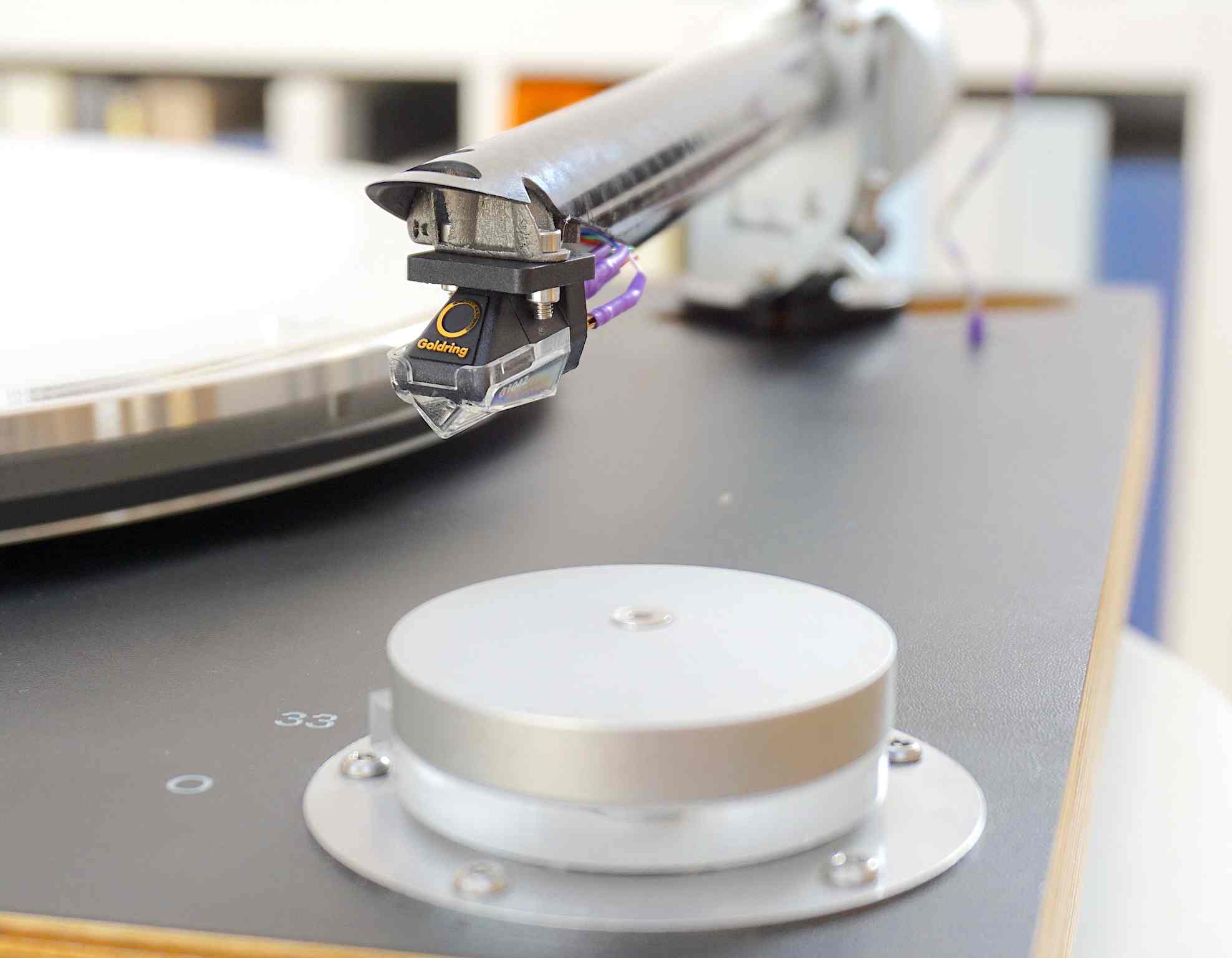
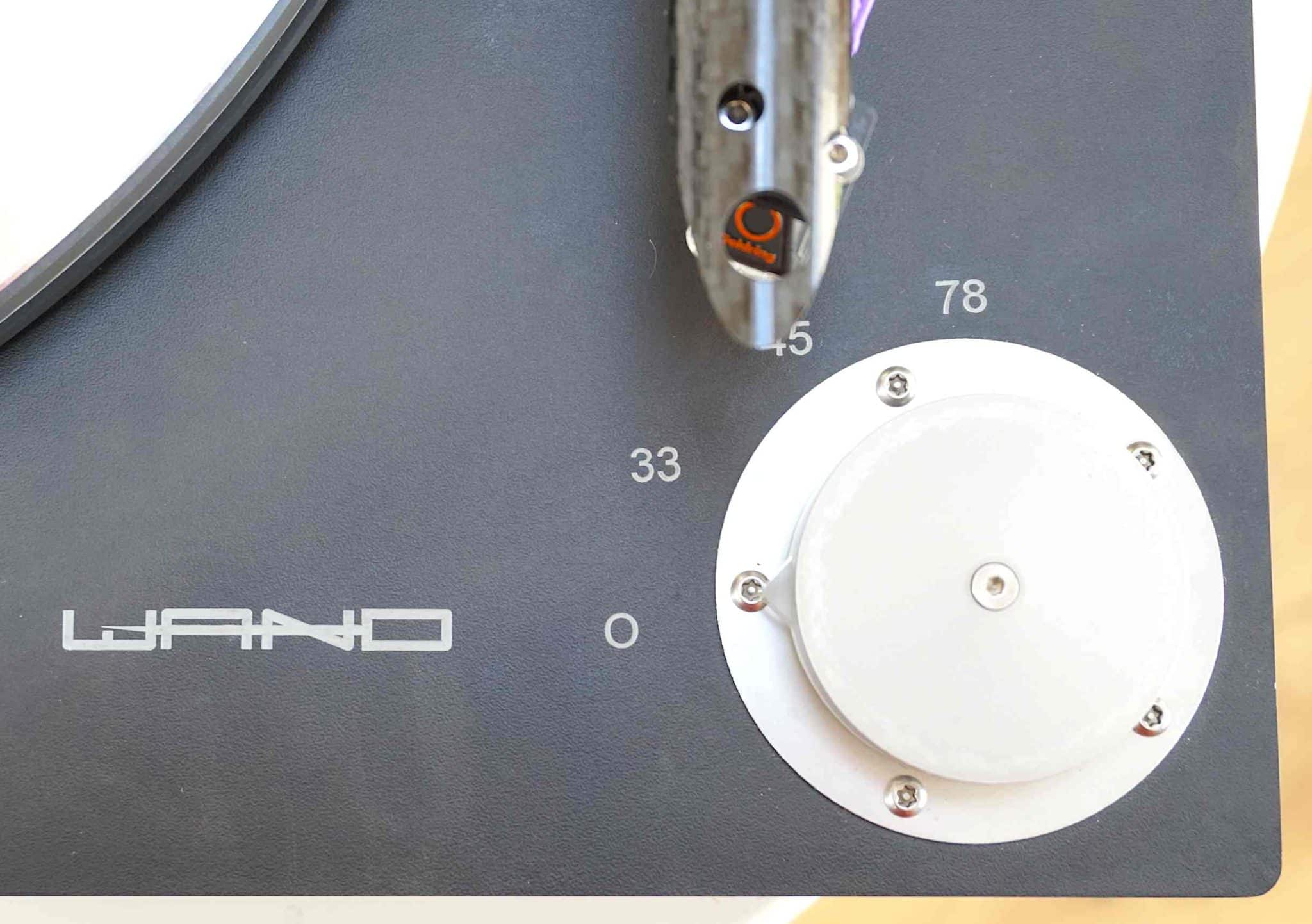
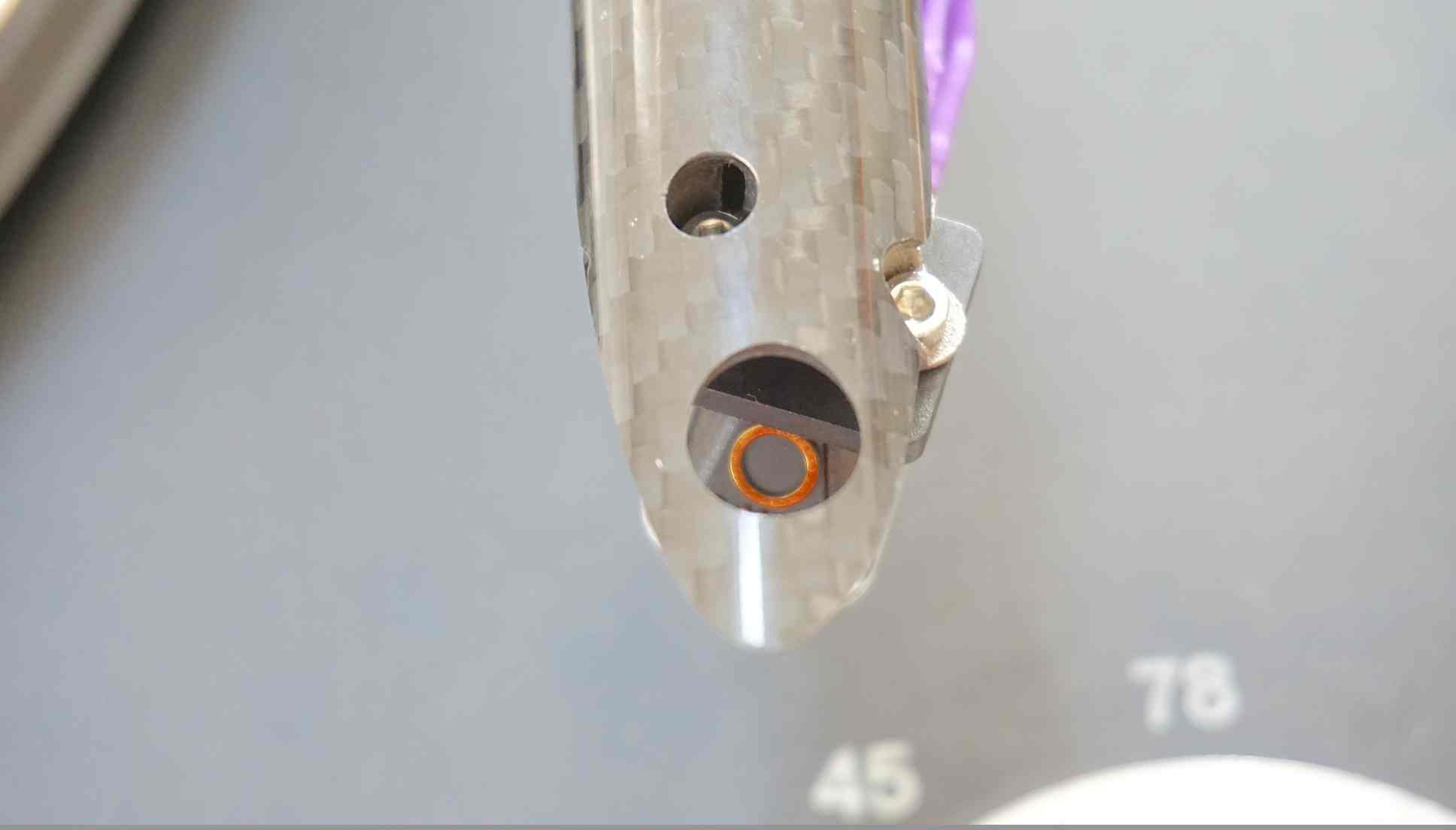
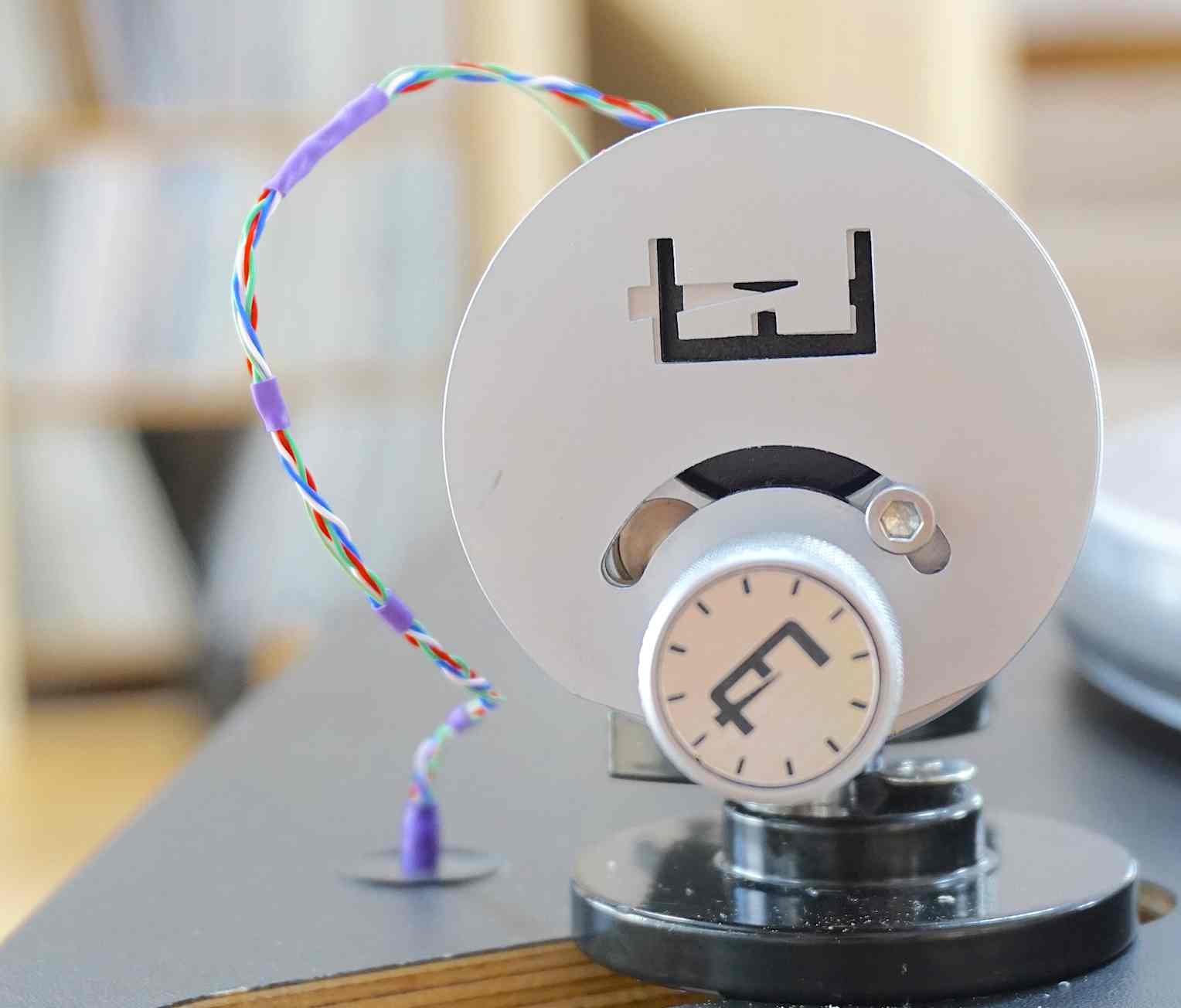
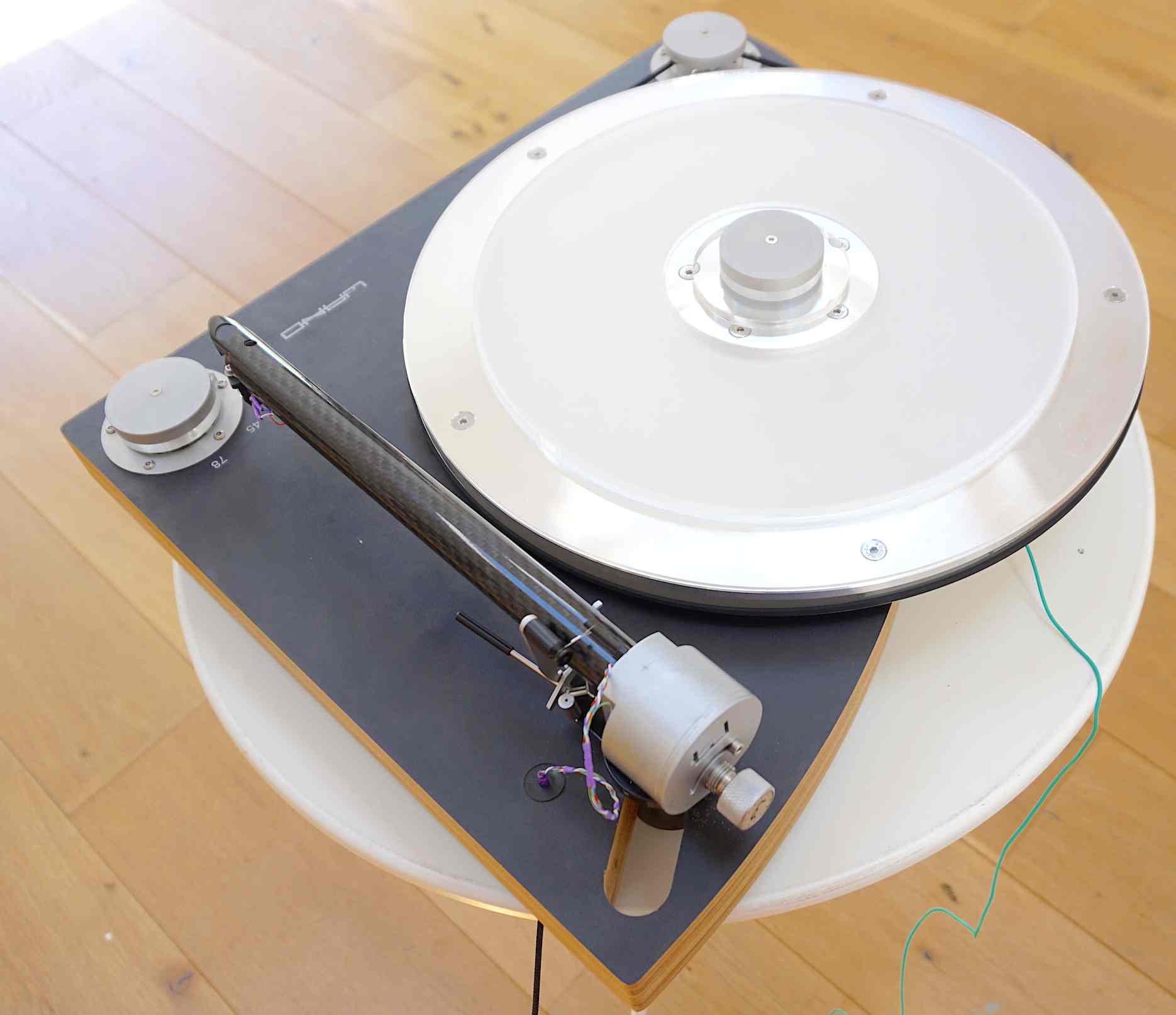
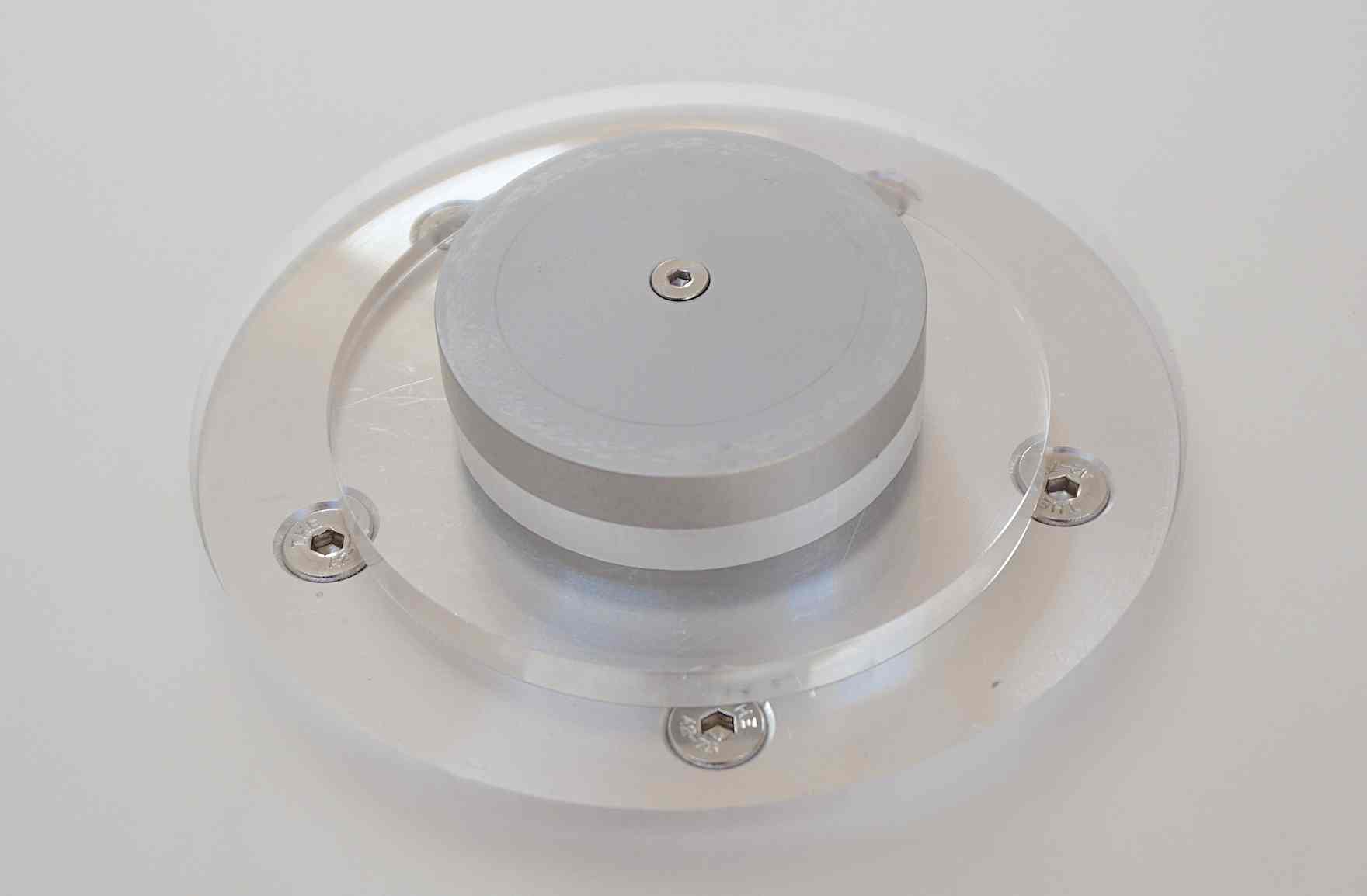
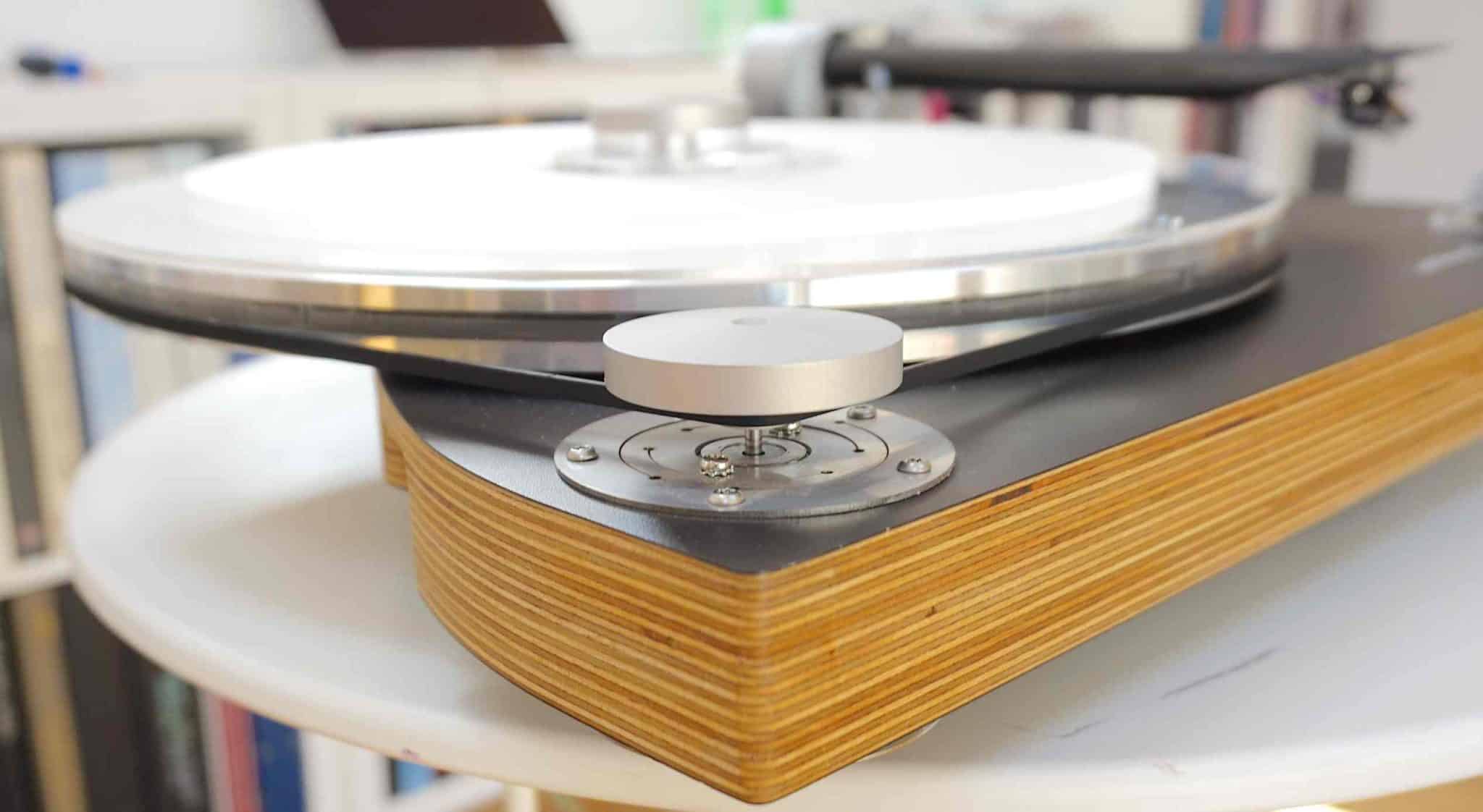
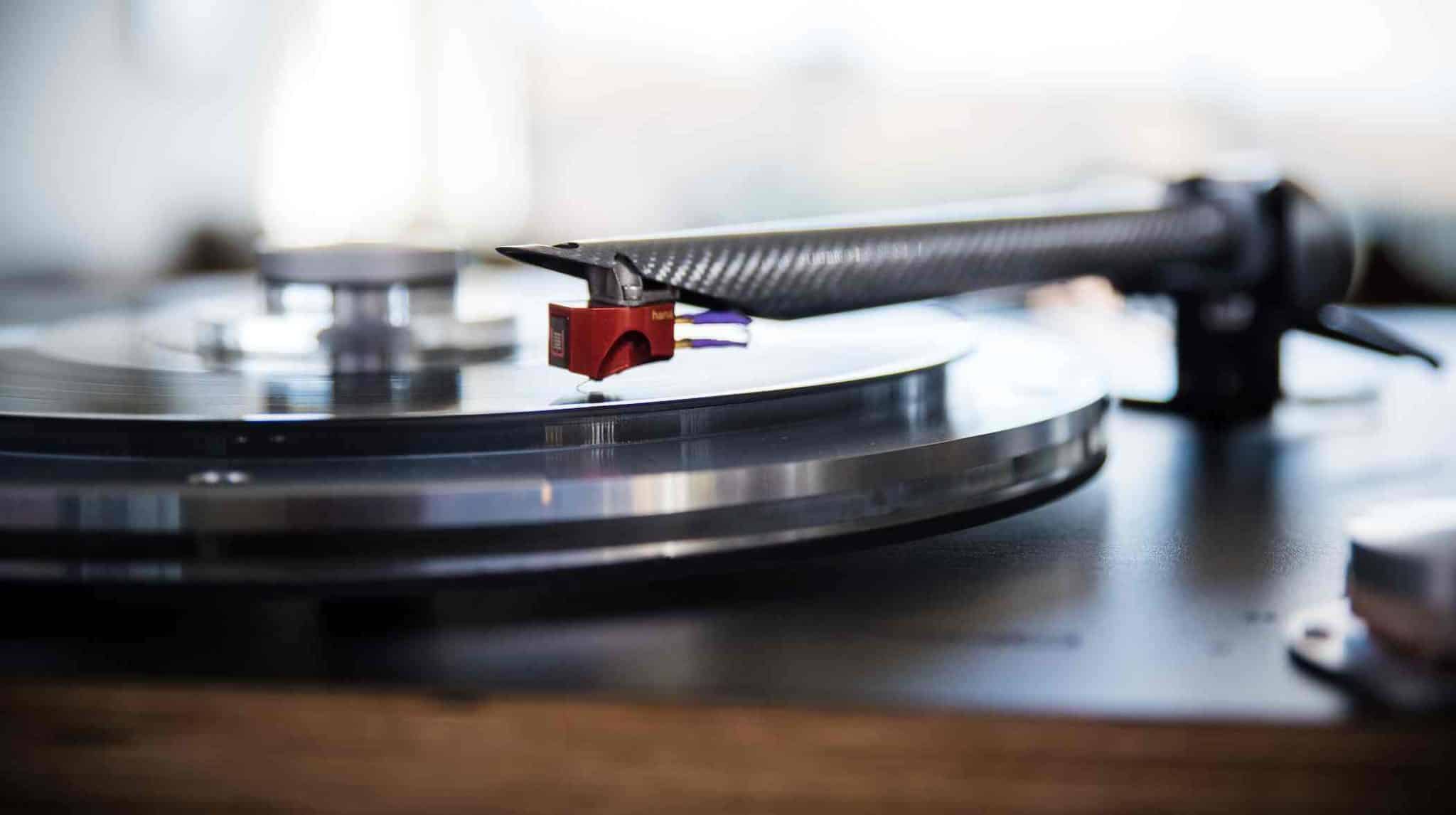
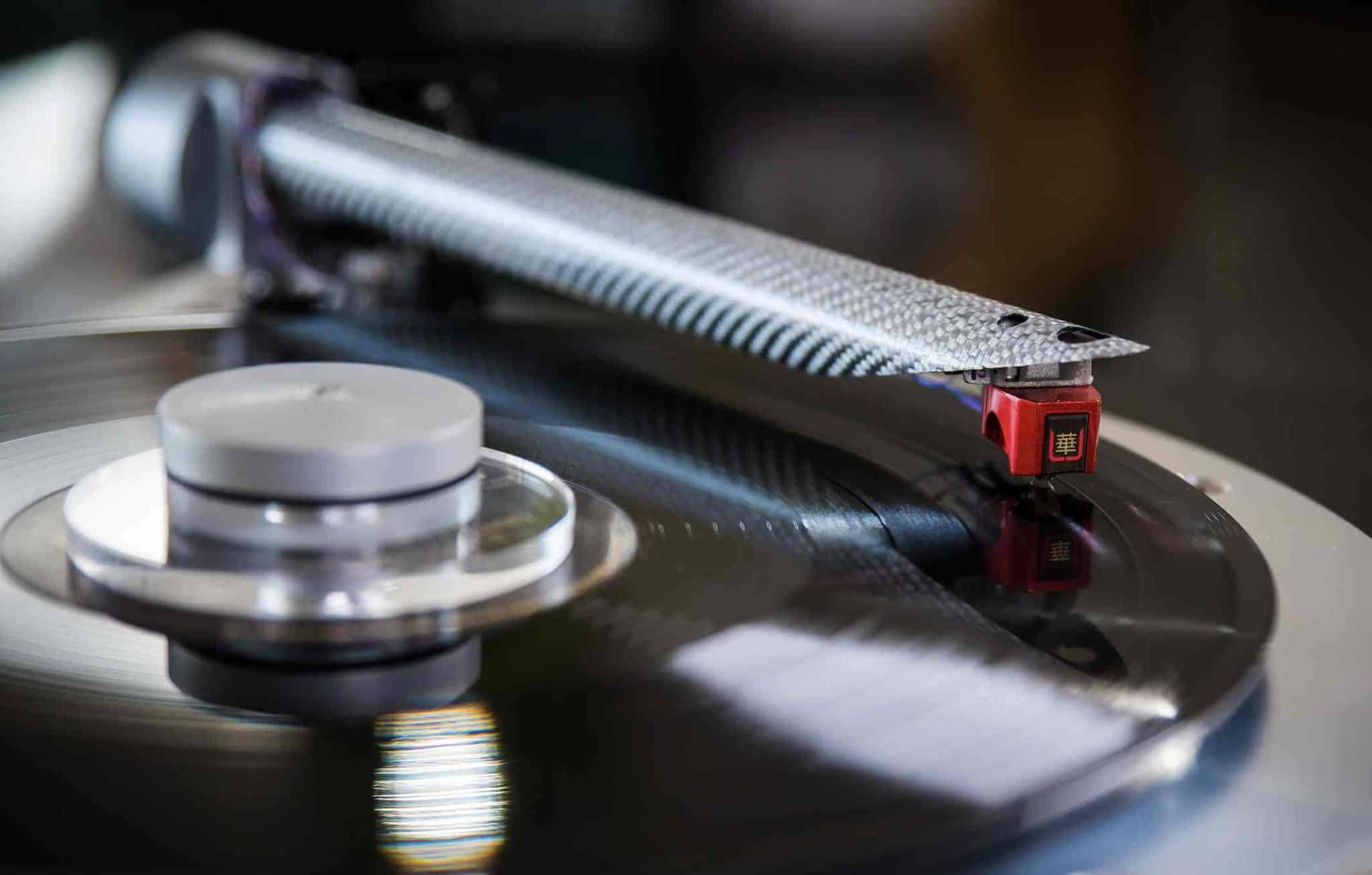
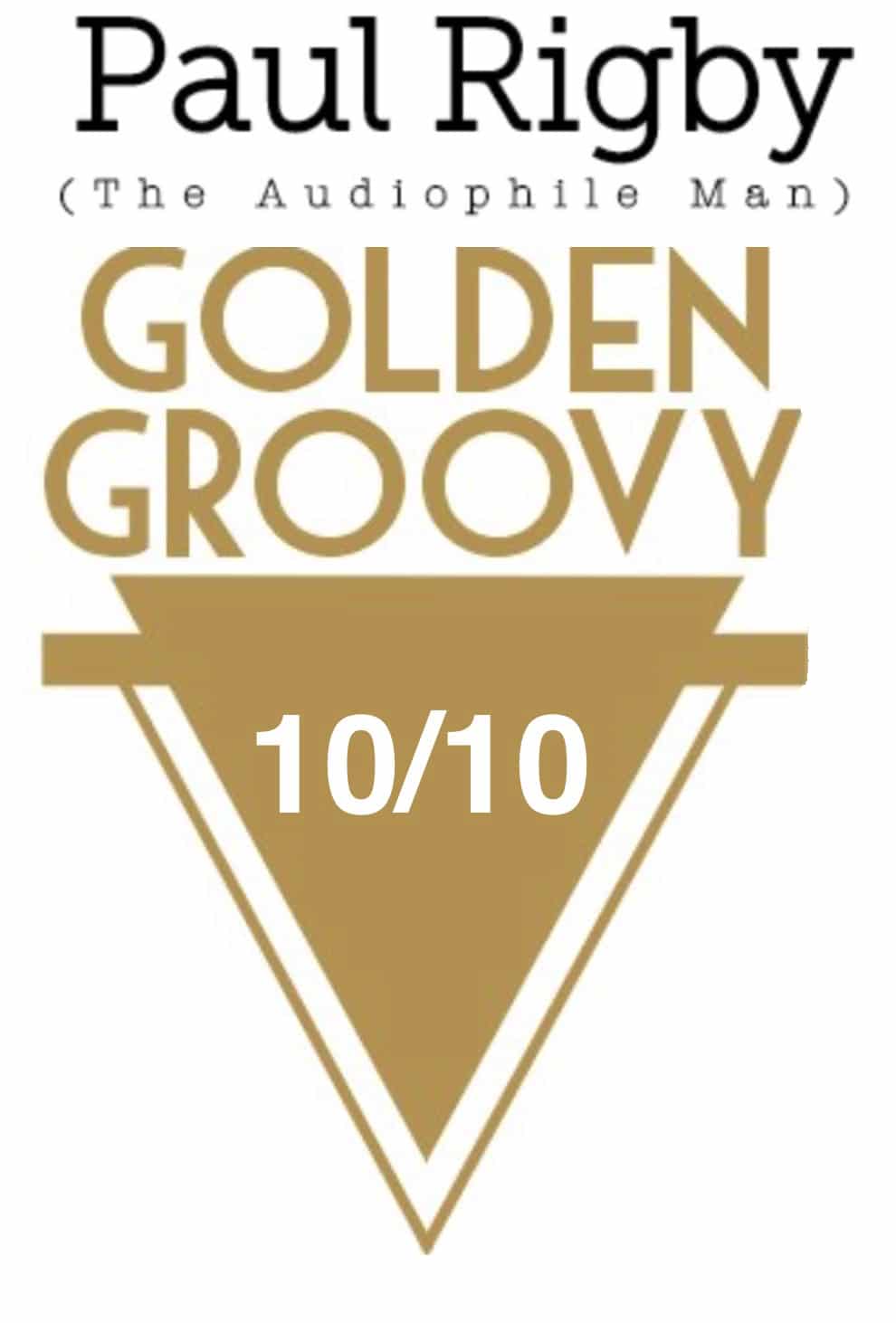

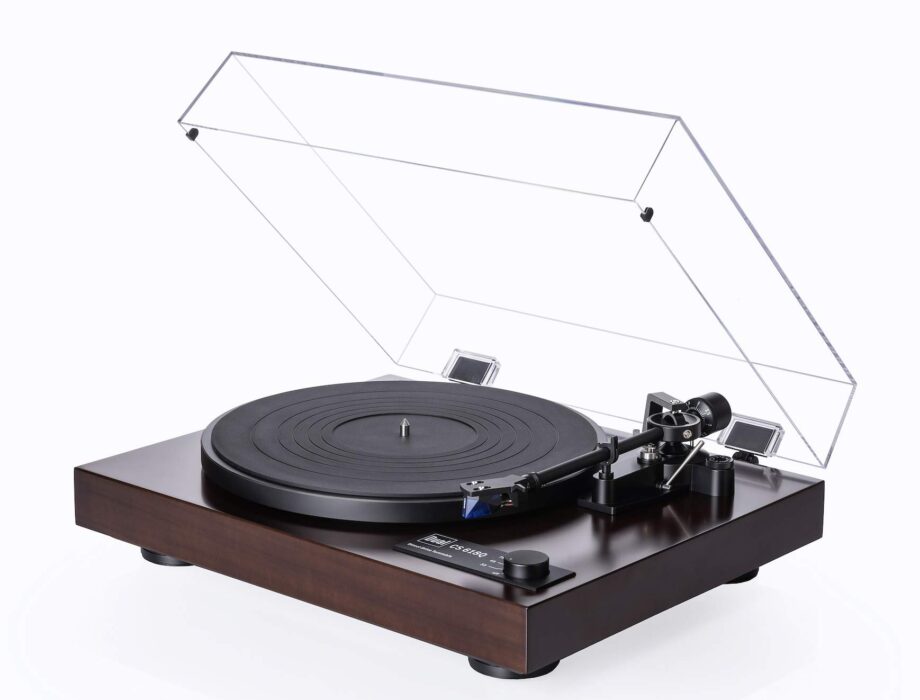
The UK price converts to about $5700 US. Like the Funk Firm, I’m not holding my breath for US distribution but the DC motor makes it easier vs. a 50 Hz AC synchronous motor.
Just to add to my YouTube comments : Fair play to you Paul for going the extra mile in typing it all out. But would it not be easier to have a transcript of the review in the same place as the YouTube review? Just my tuppence…..
Also just to point out that the metal jig you raved about needs to be handled with care otherwise scratches will suddenly appear like magic on the platter itself and anywhere you put it down.
I watched the set up video, albeit briefly, and I can see what you’re saying. Anyway it’s not as plain sailing as it seems and the customer will definitely need extra support to do justice to the design.
On a positive note it’s a winner all the way and your brilliant review should give the designer plenty of encouragement that what he set out to do actually works and then some. We need more like him!
Finally my own turntable has a very similar birch ply base with, you guessed it, 25 layers. I actually sat right down beside it and counted the darned layers? My eyes have been funny ever since lol!
Hi Dermot – you’ve lost me a tad there, where do you suggest the transcript be placed again? Sorry.
And yes, good advice on the scratchy jig.
And thank you for your very kind words. Appreciate it.
No worries! Whilst I was watching the YouTube clip of The Wand 13-4 turntable – Unboxing and Set up I noticed the transcript version below it. Click on the downward facing arrow to the right of the title box. Then select Show Transcript. I still think the way you‚Äôre doing it is absolutely fine anyway so just ignore me ü•¥
Ahhh, gotcha. This is an auto-generated YouTube thing. I don’t do that. I much prefer the website method because you can insert hires images, the formatting is superior, so’s the font, etc and it just makes for a more relaxing reading experience.
Gotcha too üòä
Hello Paul,
Lovely review as always. I think i understand what Dermot is trying to say. You have a Youtube and written review off the same product. So it’s important how you present those to the reader. For instance to find your Youtube reviews you have can look in features or hifi reviews but they are at the bottom of the list and could be missed. Also for me i usually wait for the written version. Sometimes i look at the video but mostly i personally prefer the written version.
What Dermot is trying to say is that you don’t have the written review at the same place as the youtube version. So one thing you could do is put the video at the top of the written review so that way both are on the same page. Just a thought to further improve the site. And put a link of the written version under the youtube version or did you already do that?
Many thanks, Geoffrey.
I understand what you and Dermot are saying but I also appreciate that many people who join me on this website dislike YouTube and social media on a broad level. Sometime intensely. I’ve had comments to that effect, in the past.
To conflate the two, for them especially, would almost be passive aggressive, I reckon. Having a video screen shoved under their noses when all they want is a pure reading experience, etc. Hence, I wanted to distance the text from the video.
I try my best to be sensitive to these matters 🙂
Great review Paul.
I am interested in why you chose the cadenza bronze over the Benz Glider to test with this? Any reason at all? I have ordered a Wand 14.4 and am second-guessing myself every 10 seconds on the right cartridge match.
Cheers
Just what I had to hand at the time, David. I used to have a Glider and can happily recommend it so go for that if you wish, sure.
Hi Paul
I am at last going to sort out a new turntable ( I toyed with the idea of upgrading my linn lp12 motor power supply bearing etc but the cost was almost 3000 pounds) you gave me great advice some years ago but this wand turntable was not around at the time and apart from your more thorough review it has had very positive reviews all over the world, I suppose I want you to tell me to buy it and stop faffing around 🙂
All the best for this new year
Mike
Michael, buy it and stop faffing around.
Thanks Paul